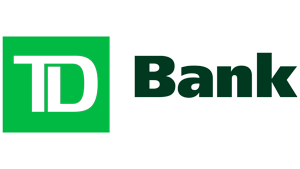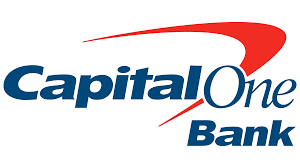Bank Statement Templates: Collection of Pre-designed Templates
Sample bank document templates are pre-designed documents that mimic the layout and format of actual bank statements. They are available in various file formats, including Microsoft Excel, Word, and PDF, making them accessible and user-friendly for individuals and businesses alike.
Having a collection of pre-designed bank statement templates offers convenience and time-saving benefits. Instead of creating bank statements from scratch, you can choose from a range of professionally designed templates that cater to different financial needs. These templates typically include sections for account information, transaction details, balances, and other relevant data.
Explanation of Different Template Styles and Formats
Bank statement templates come in a variety of styles and formats, each offering unique advantages based on your requirements. Let’s explore some common styles and formats:
- Traditional Format: This style closely resembles the paper statements provided by banks. It includes clear headings, columns for transaction details, dates, descriptions, and balances, arranged in a neat and organized manner. The traditional format is ideal for those who prefer a straightforward representation of their financial information.
- Modern Format: Designed with a sleek and contemporary aesthetic, modern bank statement templates focus on visual appeal while retaining essential information. These templates often incorporate color schemes, graphs, and charts to present financial data in an engaging and user-friendly manner.
- Summary Format: Ideal for individuals or businesses with multiple accounts, summary bank statement templates provide an overview of transactions across all accounts in a concise format. They include a summary section with total balances and categories, allowing users to get a quick snapshot of their financial status.
- Budgeting Format: For those emphasizing budgeting and expense tracking, budgeting bank statement templates are a valuable tool. These templates typically include additional sections for categorizing expenses, comparing actual spending against budgeted amounts, and analyzing financial trends.
- Business Format: Business bank statement templates cater to the specific needs of organizations. They often incorporate sections for invoicing, sales records, and business-specific transaction details. These templates are useful for managing finances, tracking cash flow, and preparing financial statements.
- Personal Format: Designed for individual users, personal bank statement templates focus on simplicity and ease of use. They provide a comprehensive overview of personal finances, including income, expenses, and savings. Personal templates often include sections for tracking personal budgets and monitoring progress towards financial goals.
How to Choose the Right Template for Specific Needs
Selecting the right bank statement template is crucial for an effective financial management system. Consider the following factors when choosing a template that meets your specific needs:
- Purpose: Determine the purpose of the bank statement. Are you using it for personal finance, business accounting, or a specific financial project? Identifying the purpose will help you narrow down the template styles and formats that align with your requirements.
- Features: Assess the features and sections included in the template. Ensure that it covers all the necessary elements, such as transaction details, balances, and account information. If you have specific requirements, such as budgeting or invoicing, look for templates with those additional features.
- Design: Consider the visual appeal and readability of the template. A well-designed template enhances the user experience and makes it easier to interpret financial data. Look for a design that is visually pleasing, organized, and easy to navigate.
- Customization: Evaluate the level of customization available in the template. Can you modify colors, fonts, or add your logo? Customization options allow you to personalize the template to reflect your brand or individual style.
- Compatibility: Ensure that the template is compatible with the software you use. Templates in commonly used file formats, such as Excel, Word, or PDF, offer flexibility and ease of use across various devices and operating systems.
- User Reviews: Consider user reviews and ratings when selecting a template. Feedback from other users can provide insights into the usability, functionality, and reliability of the template.
Customization Options for the Templates
Bank statement templates often provide customization options, allowing you to tailor the template to your unique requirements. Here are some common customization options available:
- Branding: Add your company logo, name, or personal branding elements to the template. This helps create a professional look and ensures consistency with your overall branding strategy.
- Color Schemes: Modify the colors used in the template to match your brand’s color palette or personal preferences. Consistent color schemes enhance visual appeal and make the statement more visually cohesive.
- Fonts and Typography: Customize the fonts and typography to align with your brand’s visual identity. Choose fonts that are easy to read and convey the desired tone and style.
- Sections and Categories: Adjust the sections and categories in the template to reflect your specific financial needs. Add or remove sections as necessary, ensuring that the statement captures the information relevant to your financial management.
- Formulas and Calculations: Customize formulas and calculations to automate specific calculations or generate additional insights. This feature is especially valuable for budgeting templates or those requiring complex financial calculations.
- Data Import: Some templates allow for easy data import from external sources, such as accounting software or bank statements. This feature simplifies the process of updating and populating the template with accurate and up-to-date financial data.
FAQs (Frequently Asked Questions)
- Q: Are bank statement templates legally valid?
- A: Bank statement templates are not legal documents on their own. However, when used for personal finance management or internal business purposes, they serve as valuable tools for organizing and presenting financial information.
- Q: Can I edit the templates after downloading them?
- A: Yes, bank statement templates are typically editable. You can customize them to include your specific financial data and adjust formatting elements to suit your preferences.
- Q: Where can I find bank statement templates?
- A: Numerous websites offer bank statement templates for free or at a nominal cost. You can find them by conducting a simple search online, and many websites provide templates in different styles and formats.
- Q: How can I ensure the accuracy of the information in the template?
- A: It is important to review and cross-reference the data entered into the template with your actual bank statements. Double-checking for errors and ensuring the accuracy of information is essential to maintain financial integrity.
- Q: Can I use bank statement templates for business accounting purposes?
- A: Yes, bank statement templates can be used for business accounting purposes. However, it is crucial to consult with an accountant or financial professional to ensure compliance with accounting standards and regulations.
- Q: Are there online tools available for creating customized bank statement templates?
- A: Yes, various online tools and software offer the capability to create customized bank statement templates. These tools often provide user-friendly interfaces and a wide range of customization options.
Conclusion
Bank statement templates are valuable resources for individuals and businesses seeking efficient financial management solutions. They offer a range of pre-designed options to choose from, allowing you to select the template that best fits your needs. Understanding the different styles and formats, considering factors such as purpose and features, and leveraging customization options enable you to optimize the use of these templates for your financial tracking and reporting requirements.
With the right bank statement template, you can streamline your financial management processes, track expenses, analyze trends, and present information in a clear and professional manner. Explore the vast collection of bank statement templates available online, customize them to align with your unique needs, and take control of your financial journey.







